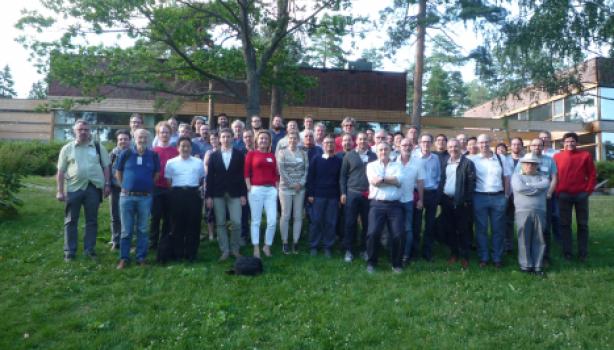The enhanced Racetrack Model Coil (eRMC) is a magnet consisting of two racetrack (block) coils assembled without midplane gap and featuring a straight section of approximately 750 mm allowing the study of the design and assembly parameters relevant for full-length accelerator magnets. The magnet produced a 16.36 T central field at 1.9 K and a 16.5 T peak field on the coil. This is the highest dipole field ever reached for a magnet of this configuration. The magnet was also tested at 4.5 K and reached a field of 16.3T, corresponding to 98% of the estimated conductor limit at this temperature as measured from witness strands.

The enhanced Racetrack Model Coil (eRMC). (Image: CERN)
The magnet uses Nb3Sn superconducting wires, the superconductor used for the High Luminosity LHC Project (HL-LHC). The same material (Nb3Sn) in an identical cable configuration, was used for FRESCA2, a 100 mm aperture dipole magnet also built with block coils, to be installed in a test facility at CERN. In 2018, FRESCA2 has set a world record field for a bore-free dipole magnet of 14.6 T.
It is worth recalling the result recently achieved with the MDPCT1 magnet at FNAL by the US-MDP (Magnet development Program), a US-DOE program with objectives comparable to the FCC Project Study. MDPCT1, with an aperture of 60 mm, was tested at FNAL in June 2019 and achieved 14.1 T at 4.5K, a world record for a cos-theta model magnet (see previously on Accelerating News).
These results, and the recent advances on Nb3Sn conductors, demonstrate the potential of this technology for a next step hadron collider such as the FCC-hh. In the past year, the FCC 16T magnet development programme has attracted global interest, supported also by the EU-funded EuroCirCol project, allowing to establish a rigorous collaboration to carry on further R&D on the domains of superconducting technologies and mechanical design (see also “Towards 16T magnets for future particle colliders”).
After the success of this test, the next step is to dis-assemble eRMC, and re-assemble it adding an additional racetrack coil in the midplane, opening a cavity of 50 mm diameter. This configuration will reproduce, in its central part, the same coil geometry as that of an accelerator dipole magnet built with block coils.


